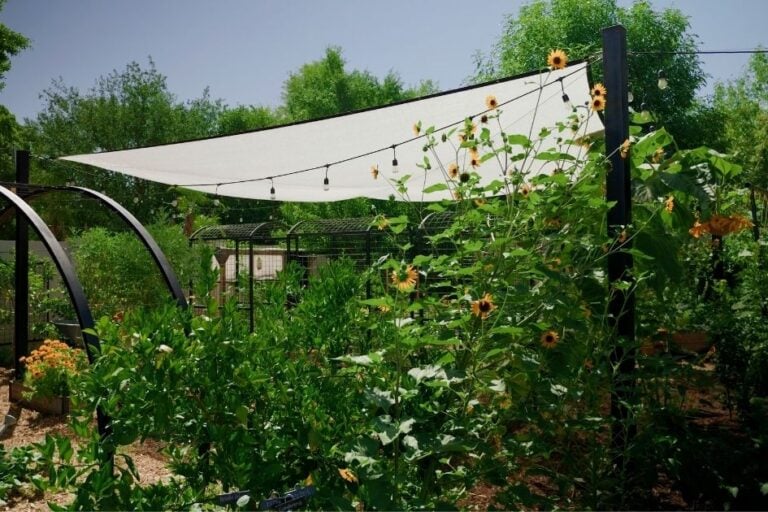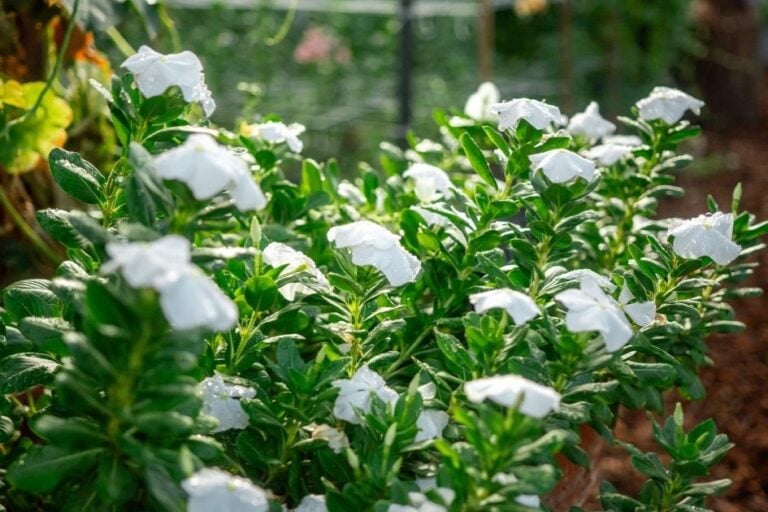Why Carrots Bolt (and What to Do About It)
It’s frustrating when you’re looking forward to garden-fresh carrots, and instead they shoot up a flower stalk and stop growing. If your carrots bolted this spring, you’re not alone—and it probably wasn’t your fault.
Carrots are biennials, which means they usually flower in their second year. But when temperatures fluctuate (which they often do in the low desert), carrots can bolt early.

Here’s what we will cover:
- What Causes Carrots to Bolt?
- What Does a Bolting Carrot Look Like?
- Can You Still Eat Bolted Carrots?
- How to Prevent Carrots from Bolting
- Don’t Worry—It Happens!
What Causes Carrots to Bolt?
Normally, carrots grow a large, sweet root in their first year. Then, in their second year, they send up a tall stalk and bloom. But if they experience a cold snap (even briefly) and then warm weather, they can be tricked into thinking winter has passed. That’s when they bolt—flowering much earlier than expected.

Bolting means a plant has shifted its energy from growing roots or leaves to producing flowers and seeds.
In carrots, this is usually triggered by a process called vernalization, when a plant experiences a cold period followed by warm temperatures. This combination tricks the plant into thinking it’s already gone through a winter, and it’s time to reproduce.
This happens more often when:
- Carrots are already a bit mature
- They’re stressed (from inconsistent water, overcrowding, or poor soil)
- Temperatures fluctuate widely (like they often do in desert springs).
You may also notice bolting in other crops this time of year—learn more in Why Did My Onions Bolt?, What Causes Witch’s Broom in Garlic?, and How to Prevent Cilantro from Bolting.
What Does a Bolting Carrot Look Like?

- The central stalk thickens and shoots upward
- Feathery flower buds form on top
- The root may become woody or bitter
- Growth of the root usually slows or stops
Can You Still Eat Bolted Carrots?
You can, but the taste and texture usually aren’t great. If the root is still small and tender, give it a try. But often, bolted carrots are tough and bitter. Instead of tossing them, consider leaving a few in the ground to flower.

Carrot flowers are beautiful umbel blooms that attract tons of beneficial insects.
Pollinators love them—just like they love the flowers in other members of the same plant family. Learn more in How to Grow Dill, How to Grow Parsley, and How to Grow Fennel.
If you let the flowers mature, you can also save seeds. Here’s a step-by-step guide on How to Save Seeds from Your Garden.
How to Prevent Carrots from Bolting
You can’t control the weather, but you can reduce the chances of bolting with a few simple steps:
- Plant at the right time – In the low desert, carrots do best when planted from late September through February. For a complete guide to planting, growing, and harvesting healthy carrots, check out How to Grow Carrots.
- Mulch deeply – Mulch helps insulate the soil, reducing temperature swings that can trigger bolting.
- Harvest on time – If you’ve had a sudden warm-up in early spring, consider harvesting early, especially if your carrots are already near maturity.
- Choose bolt-resistant varieties – Some carrot types are more tolerant of heat and temperature swings. Look for “slow to bolt” or “heat-tolerant” options. Types often noted for bolt resistance include Purple Haze, Sugarsnax, Speedo, and Rubypack. I’ve had excellent results with Sugarsnax carrots. I’m going to plant more of those next season.

For more highly rated carrot varieties, check out the Cornell Vegetable Varieties Database.
Bolting happens!
Carrots that bolt in their first year are disappointing, but it’s a natural response to unpredictable weather.
This has happened more often to me over the last couple of years, especially as we’ve had more unpredictable swings in spring weather. I’m planning to try a few things: planting more bolt-resistant varieties, adding mulch (something I usually skip for carrots), and watching the forecast more closely so I can harvest early if a sudden heat wave is coming.
You may also notice bolting in other crops this time of year—learn more in Why Did My Onions Bolt?, What Causes Witches Broom in Garlic?, and How to Prevent Cilantro from Bolting.

Have you had trouble with bolting carrots, too? I’d love to hear what has worked for you—please share your experiences in the comments.
For more common garden issues and how to fix them, visit my Garden Troubleshooting Guide.
If this post was helpful, please share it!









Leave a comment on Why Carrots Bolt (and What to Do About It)